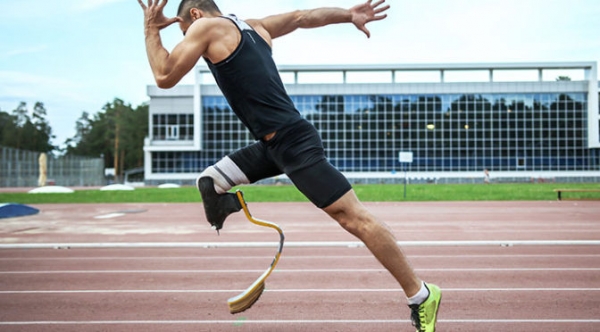If you’re fortunate enough to have all of your limbs, then chances are you take them for granted. Prosthetic limbs, such as feet, are incredibly valuable to amputees because a prosthetic can help restore some of the capabilities lost with an amputated limb. Although prosthetic limbs have still not advanced to the point where they can rival the functionality provided by biological limbs, the capabilities they do provide can be significant.
Here’s a quick look at how prosthetics work to make life easier for amputees.
How Prosthetics Work
While new materials and technologies have modernized prosthetics over the past century, the basic components of prosthetic limbs remain the same. The basic components include:
- The pylon—the internal frame of skeleton of the prosthetic. The pylon provides structural support and has traditionally been formed of metal rods. However, modern technology has allowed for lighter carbon-fiber composites to be used in place of the metal rods. The pylons are sometimes enclosed by a cover (usually made from a foam-like material). The cover can be shaped and colored to match your skin tone in order to give the prosthetic a more lifelike appearance.
- The socket—the portion of the prosthetic device that interfaces with the patient’s limb, stump, or residual limb. Since the socket transmits force from the prosthetic to the body, it must be meticulously fitted to the residual limb to ensure that it doesn’t cause irritation or damage to the skin or underlying tissues. A soft liner tends to be used in the interior of the socket, and a patient may also wear one or more prosthetic socks to achieve a snugger fit.
- The suspension system—this is what keeps the prosthetic attached to the body. The suspension mechanism can come in several forms (straps, belts, or sleeves), although the most common type of suspension mechanism relies on suction.
Even though most prosthetic limbs have these basic components in some form or another, each device is unique and designed for a specific type and level of amputation.
Choosing the Right Prosthetic Foot
Today, amputees have a wide variety of prosthetic feet to choose from, designed for walking, cycling, golfing, swimming, snow skiing, and running. Heavier wood and steel materials have been replaced by lightweight plastics, aerospace alloys, and carbon-fiber composites. But how do you choose the right one for your lifestyle?
There are a number of key factors that you should consider, including materials, comfort, function, energy storage, and multi-axial motion.
- Materials—the materials in a prosthetic foot differ by activity level. Wood, plastic, and foam are usually found in feet designed for people with low activity levels and for those who require stability. Carbon feet meet the functional needs for shock absorption and energy efficiency, and are also lightweight.
- Comfort—a prosthetic foot has to feel good for you to meet your activity goals. Comfort allows you to be more active, and the function of your prosthetic foot directly affects comfort.
- Function—prosthetic feet are designed to mimic the human foot at a specific activity level. For people who can’t walk, the function is largely cosmetic. For those who are most active, a prosthetic foot must mimic a normal foot during the act of walking. It must act as a shock absorber when your heel hits the ground, adapt to uneven terrain, provide a smooth rollover from heel to toe, and provide a rigid lever for propelling forward when you finish your step.
- Energy storage—a foot made with carbon fiber for energy storage gives you a spring in your step as the carbon fiber acts as a spring, compressing as you apply weight and propelling you forward as your foot rolls, returning energy to your step as the spring releases. Some prosthetics have one spring in the heel and a second spring in the forefoot (just what you need for walking in various speeds, running, climbing hills, or descending stairs with a secure, confident stride). With carbon fiber, the longer the spring, the more energy it can store and the more responsive the foot will be.
- Multi-axial motion—some prosthetic feet are designed to mimic the ankle, which allows the foot to move in multiple planes. Multi-axial capability in a foot allows you to raise and lower the forefoot, move the forefoot to the left and right, and roll the foot slightly to the inside or to the outside. Multi-axial motion is needed to walk comfortably and confidently on uneven ground, when your foot must adapt to whatever it encounters.
The Bionic Foot
While prosthetics are the norm for amputees at the moment, the future seems to be leading us in the direction of bionic feet. Bionic feet that can be controlled by the patient’s mind, using sensors implanted inside the muscle tissue, have been proven to work in human-testing trials.
The tiny implanted myoelectric sensors (IMES), which are surgically implanted in the residual muscle tissue about the leg, wirelessly transmit a signal to the foot, telling it to perform a specific action. While this is a breakthrough in prosthetic technology, there are still a few bugs to work out before this becomes a more mainstream option for amputees.
Schedule an Appointment
If you have any questions or concerns about foot health or need guidance in the event you’re in need of a prosthetic foot, do not hesitate to contact the caring and professional team at the Superior Foot and Ankle Care Center.

